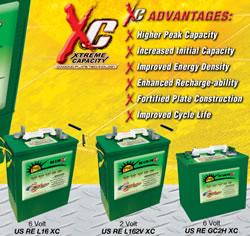NREL Collaboration Boosts Potential for CdTe Solar Cells
Scientists at the Energy Department's National Renewable Energy Laboratory (NREL) collaborated with researchers at Washington State University and the University of Tennessee to improve the maximum voltage available from a CdTe solar cell, which is a key factor in improving solar cell efficiency.
A critical milestone has been reached in cadmium telluride (CdTe) solar cell technology, helping pave the way for solar energy to directly compete with electricity generated by conventional energy sources.
The research appears in the Nature Energy journal article, "CdTe solar cells with open-circuit voltage breaking the 1 V barrier," authored by James Burst, Joel Duenow, David Albin, Eric Colegrove, Matthew Reese, Jeffery Aguiar, Chun-Sheng Jiang, Maulik Patel, Mowafak Al-Jassim, Darius Kuciauskas, Santosh Swain, Tursunjun Ablekim, Kelvin Lynn, and Wyatt Metzger. LINK TO COME
Silicon solar cells currently represent 90% of the solar cell market, but it will be difficult to significantly reduce their manufacturing costs. CdTe solar cells offer a low-cost alternative. These cells also have the lowest carbon footprint and adapt better than silicon in real-world conditions including hot, humid weather and low light. However, CdTe solar cells have not been as efficient as silicon-based cells until recently.
One key area where CdTe has underperformed is in the maximum voltage available from the solar cell, a measure called open-circuit voltage. The quality of CdTe materials has prevented industry, universities, and national laboratories for the past 60 years from obtaining an open-circuit voltage of more than 900 millivolts on billions of solar cells; the vast majority have been limited to 750 to 850 millivolts.
The research team improved cell voltage by shifting away from a standard processing step using cadmium chloride. Instead, they placed a small number of phosphorus atoms on tellurium lattice sites and then carefully formed ideal interfaces between materials with different atomic spacing to complete the solar cell. This approach improved the CdTe conductivity and carrier lifetime each by orders of magnitude, thereby enabling the fabrication of CdTe solar cells with an open-circuit voltage breaking the 1-volt barrier for the first time. The innovation establishes new research paths for solar cells to become more efficient and provide electricity at lower cost.
The research was funded by the Energy Department's SunShot Initiative, which aims to make solar cost-competitive with traditional energy sources. It was also supported in part by Oak Ridge National Laboratory's Center for Nanophase Materials Sciences.
NREL is the U.S. Department of Energy's primary national laboratory for renewable energy and energy efficiency research and development. NREL is operated for the Energy Department by The Alliance for Sustainable Energy, LLC.
###
Visit NREL online at www.nrel.gov
Featured Product

U.S. BATTERY RENEWABLE ENERGY SERIES DEEP CYCLE BATTERIES
Our RE Series batteries are designed to provide the highest peak capacity, longest cycle life, and greatest reliability for use in industrial or residential renewable energy applications. Renewable Energy Series batteries utilize the company's exclusive XC2™ formulation and Diamond Plate Technology® to create the industry's most efficient battery plates, delivering greater watt-hours per liter and watt-hours per kilogram than any other flooded lead-acid battery in the market. Our Deep Cycle batteries are engineered to work with solar panels as well as other renewable energy applications.
